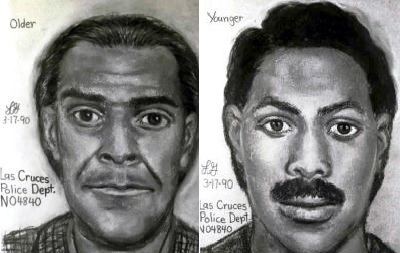Weapons .22 caliber pistol Perpetrators Unknown Motive Robbery/Unknown Total number of deaths 4 | Non-fatal injuries 3 No. of participants 2 Date 10 February 1990 Location Las Cruces | |
 | ||
Attack types Mass murder, Robbery, Arson | ||
The Las Cruces bowling alley massacre occurred in Las Cruces, New Mexico, in February 1990. Seven people were shot, four fatally, by two robbers at the Las Cruces Bowl at 1201 East Amador Avenue. The case is currently unsolved.
Contents

Shooting

On the morning of February 10, 1990, the bowling alley's manager, 34-year-old Stephanie C. Senac, was in her office preparing to open the business with her 12-year-old daughter Melissia Repass and her 13-year-old friend Amy Houser, who were planning to supervise the alley's day care. The alley's cook, Ida Holguin, was in the kitchen when two men entered through an unlocked door. One pulled a .22 caliber pistol on Holguin and ordered her into Senac's office, where she, Repass, and Houser were already being held by the other gunman.

The gunmen ordered the women to lie down while taking approximately $4,000 to $5,000 from the bowling alley's safe. The men then shot each victim several times. Soon after, Steve Teran, the alley's 26-year-old mechanic, entered, having been unable to find a babysitter for his two daughters, two-year-old Valerie Teran and six-year-old Paula Holguin (no relation to Ida), intending to drop them at the alley's day care. Not seeing anyone in the alley, however, Teran entered Senac's office and stumbled onto the crime scene. The gunmen overpowered him before shooting him and his two daughters. They then set the office on fire by igniting some papers before leaving the alley.
Houser, Teran, and his two daughters were killed. Repass, despite being shot five times, called 9-1-1 on the office phone, allowing emergency services to respond immediately and saving her life along with her mother's and Holguin's.
The event is currently a cold case.
Movie
A full-length documentary film called A Nightmare in Las Cruces was released on the 20th anniversary of the massacre. It uses actual crime scene video, pictures and interviews with family members. Filmmaker Charlie Minn hopes it will "move someone to come forward with fresh information and break the case". Since its release, more tips have been reported to the local police.
Reviews
Gary Goldstein of the Los Angeles Times wrote that "Nightmare tries its best to illuminate the vanished murderers' possible motive, theories on which range from random robbery to drug-related hit, but that continues to be the most mysterious piece of this horrific puzzle."
The Los Angeles Weekly stated that
Charlie Minn made this documentary, in part, to keep the story alive while cataloguing the lives lost, ruined or deeply crippled by the massacre. From the start, however, as the viewer listens to the entire 911 call made after the gunmen fled, and as graphic crime-scene photos fill the screen, a sense of dread sets in that what's about to unfold is exploitation tricked up in moral outrage. As the film unfolds, it proves to be just that. To Minn's credit, he sheds light on a shady businessman's shady family, one of whom may have been the true target of the bloody rampage (police officials interviewed agree that the half-ass robbery was a front for the attack), and the teary testimonials by grieving widows and mothers are genuinely wrenching.
Andrew Barker of Variety wrote,
Heavy research and the best of intentions are somewhat scuttled by a muddy constitution and an unclear sense of purpose in Charlie Minn's 'A Nightmare in Las Cruces,' which investigates a horrific unsolved massacre that took place in a New Mexico bowling alley. This at-times wrenching docu should hit hard for New Mexicans and others who remember the 20-year-old tragedy, though its budgetary constraints may limit appeal elsewhere.
Bill Goodykoontz of The Arizona Republic wrote
Minn's heart is in the right place, and his interviews with the survivors nearly 20 years later (he made the film in 2009) are often effective and always moving. Unfortunately, he's made a movie that plays basically as an extended episode of Unsolved Mysteries and other shows of that type. While spending more time with survivors, detectives and friends and family than a TV show could allow, Minn doesn't draw many conclusions but is instead content to simply lay out the facts.
TV crime informational series
This case was featured on Unsolved Mysteries two and a half months after the murders, and on America's Most Wanted twice, once in November 2004, and again in March 2010.
